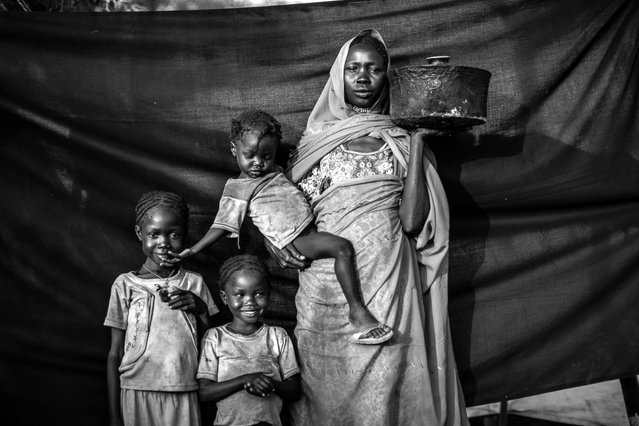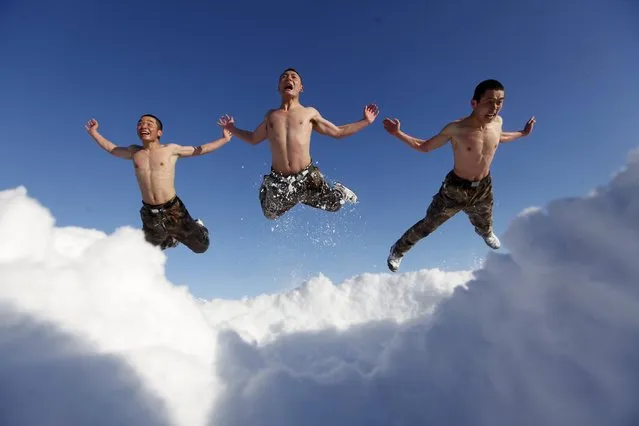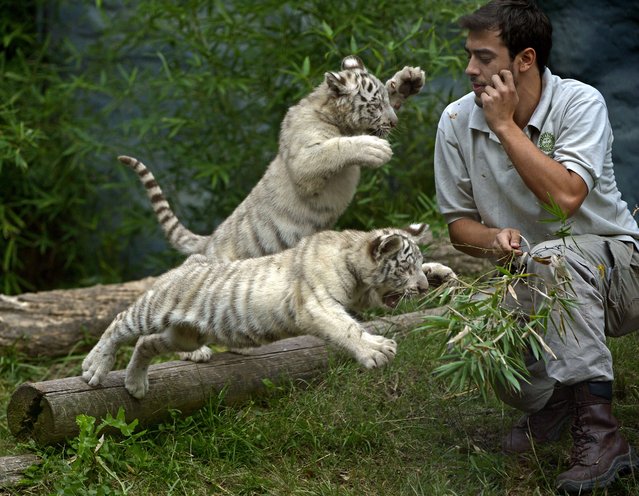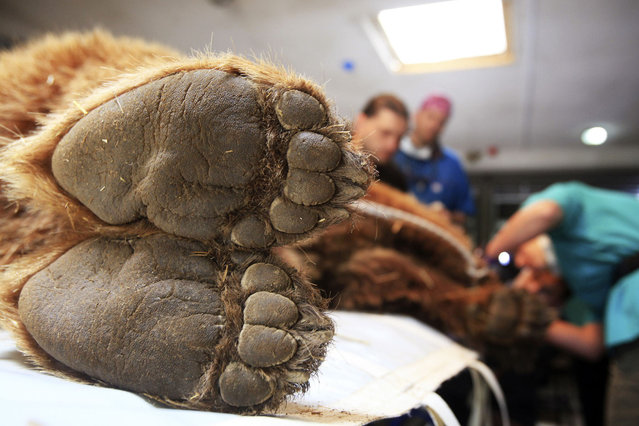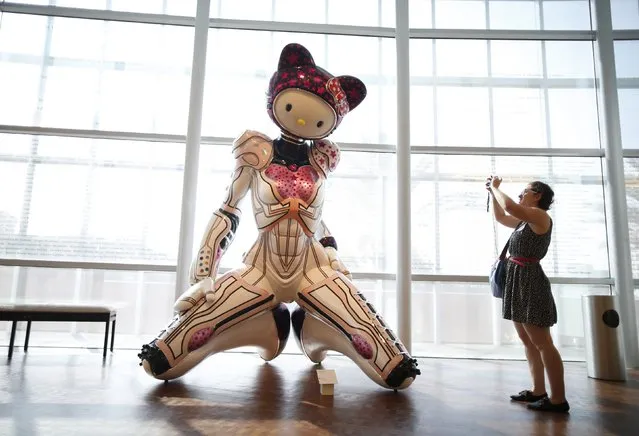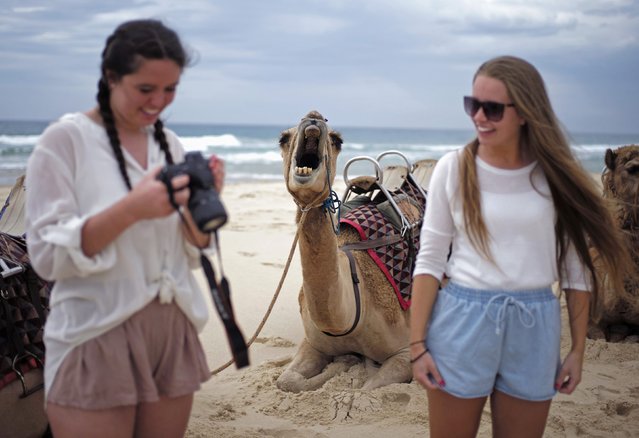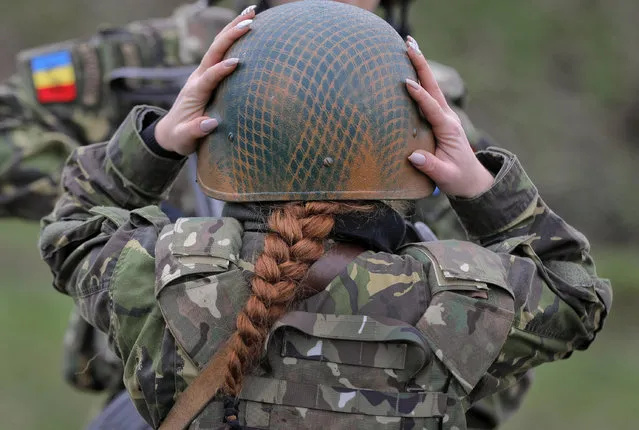
A Romanian female soldier adjusts her helmet before taking part in weapons training with US Marines female counterparts at the Capu Midia Surface to Air Firing Range, on the Black Sea coast in Romania, Monday, March 20, 2017. About 1,200 US and Romanian troops take part in the Spring Storm 17 exercise, meant to simulate defense of the Romanian Black Sea coastline and urban areas. (Photo by Vadim Ghirda/AP Photo)
21 Mar 2017 08:12:00,post received
0 comments

